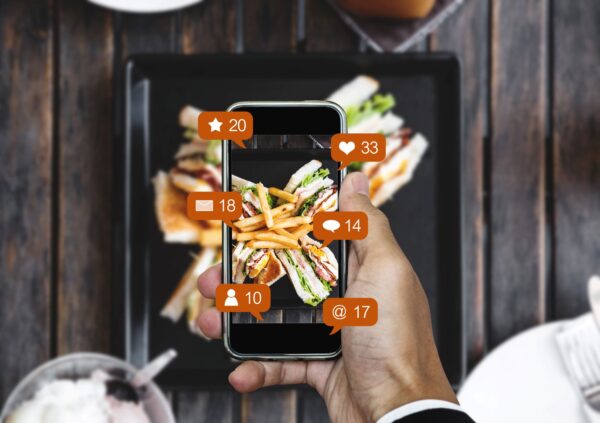Last month Facebook introduced their new ‘Reactions’ feature for responding to posts. Now, in addition to the classic thumbs up button used to like a story, users can react to a friend’s post with one of six new emoticons;
Like, Love, Haha, Wow, Sad, & Angry.
Facebook Design Director Geoff Teehan noted in a recent article on Medium, not everything is meant to be Liked. We come to Facebook every day to share things about our lives with friends and family. This can be anything from a successful new diet or celebrating a new car to sharing pictures of the kids with Grandma or sharing sad news about a loved one’s death. “Liking” a post that’s sad doesn’t quite capture the emotional range that people want to be able to express on the world’s leading social communication platform. Hence the new feature.
Now that we’ve had some time to digest this new feature, we spent some time discussing what it means for content marketing on Facebook, particularly for small businesses and brands.
 First, How the Facebook Reactions Feature Works
First, How the Facebook Reactions Feature Works
There’s no special app or installation for using the new reaction feature, it’s already available to everyone on Facebook. You simply hold (long press) the Like button and a menu will pop up above your finger with the 6 emoticon options available. Tap the one you want and you’ll ‘react to’ the post.
Easy peasy.
How this Applies to Brand Marketing
While using the feature is simple and intuitive, as digital marketers we’re interested in how this will affect our data and, of course, how we can leverage it in our social media marketing efforts.
For now, these reactions are counted in Facebook’s algorithm as traditional “Likes”. Meaning, if you react to a post (even with the angry face), you’re teaching Facebook to show you more of that kind of content. To give you some background on how Facebook’s algorithm functions, they’re in the business of populating your Facebook news feed with content that you want to see. So if you like, comment, share, or otherwise engage a post, Facebook will make a note and try to show you similar content or preference content from that source.
Of course, reacting with an angry face at a political post from your wife’s idiotic second cousin doesn’t mean you want to see more of his garbage. You wouldn’t normally “like” that post, so why would the algorithm treat them as the same response?
The truth is, we don’t know exactly how it will factor in just yet because Facebook isn’t telling anyone. What we do know, however, is that people really like to get angry about a post. Almost as much as they like to feel good. Stories that make people react in anger are more likely to end up on the New York Times most shared page than things that make us happy.
Running the Numbers
Facebook has only just released the 5 new emoticon reactions globally after testing a number of different options in Ireland and Spain so we’re sure there’s more to roll out and tweak, namely in the form of back-end Insights. Right now, the only way to dig into the numbers on how people are reacting is to look at the Reach statistics of each post individually. Click the reach number on any post on your business page and you can see the breakdown by reaction.
The Insights feature currently doesn’t differentiate these numbers between organic and paid, however. We’re hoping we can eventually see a breakdown of reactions overall across the whole page but again, Facebook is always tooling with new features so we’ll see what comes next.
A Few Other Details about Facebook Reactions
One detail we’re slightly peeved about is that only the first 3 reactions people make are shown on the post to users. So if the first three reactions are from goofballs who give a post about your dead cat a Haha, Like, and Love… that’s what everyone will see. Even if everyone that follows reacts with Wow and Sad. Odd, isn’t it?
Also, you can’t remove a reaction.
So that jerk friend who always Hahas the sad posts… yeah, that’s there to stay.
A Whole New Feedback Loop from Customers
So, getting back to how these Facebook reactions apply to brand marketing and small businesses, it’s important to note that this range of emotive responses give us a whole new view on how our audience is reacting to the content we’re putting out. Where the traditional like button was simply a barometer of the crowd’s upvotes on a particular story, the reactions now offer insight into specifically how a story resonates with people.
The major good news here is that since Facebook is counting any and all reactions as a positive signal to show more of your content to those who engage, you stand a much better chance of getting your organic content out to your full audience. Whereas a person wouldn’t normally like or comment on your content before, they may be more inclined to react with an emoticon, thus signaling to Facebook that they want to see more of your content.
Content can be targeted to elicit certain reactions based on your goals and if reactions are going a different direction, you can pivot the conversation. The name of the game in Facebook marketing is to get people to engage with your posts so they see more of them, so offering a diverse set of reactions widens the window for this to occur (thanks, Facebook!).
Pro Tip: Watch the Lovers
Jonah Berger in his book Contagious: Why Things Catch On notes that people are more inclined to talk about and share the things they love. Our mutual interests are what bring us together, especially when it comes to interactive Facebook posts. Therefore, if you find fans and followers that are often Love-ing your posts, these people may make for good brand evangelists. Target them with special offers and content you want shared with their friends and reward them with special attention. They just might become your best word of mouth.
As always, we’ll keep an eye on what’s happening with Facebook and keep you posted.
For more info on Facebook Marketing for Business, check out our ebook.
And we’re curious: How do you feel about the Facebook reactions feature?








